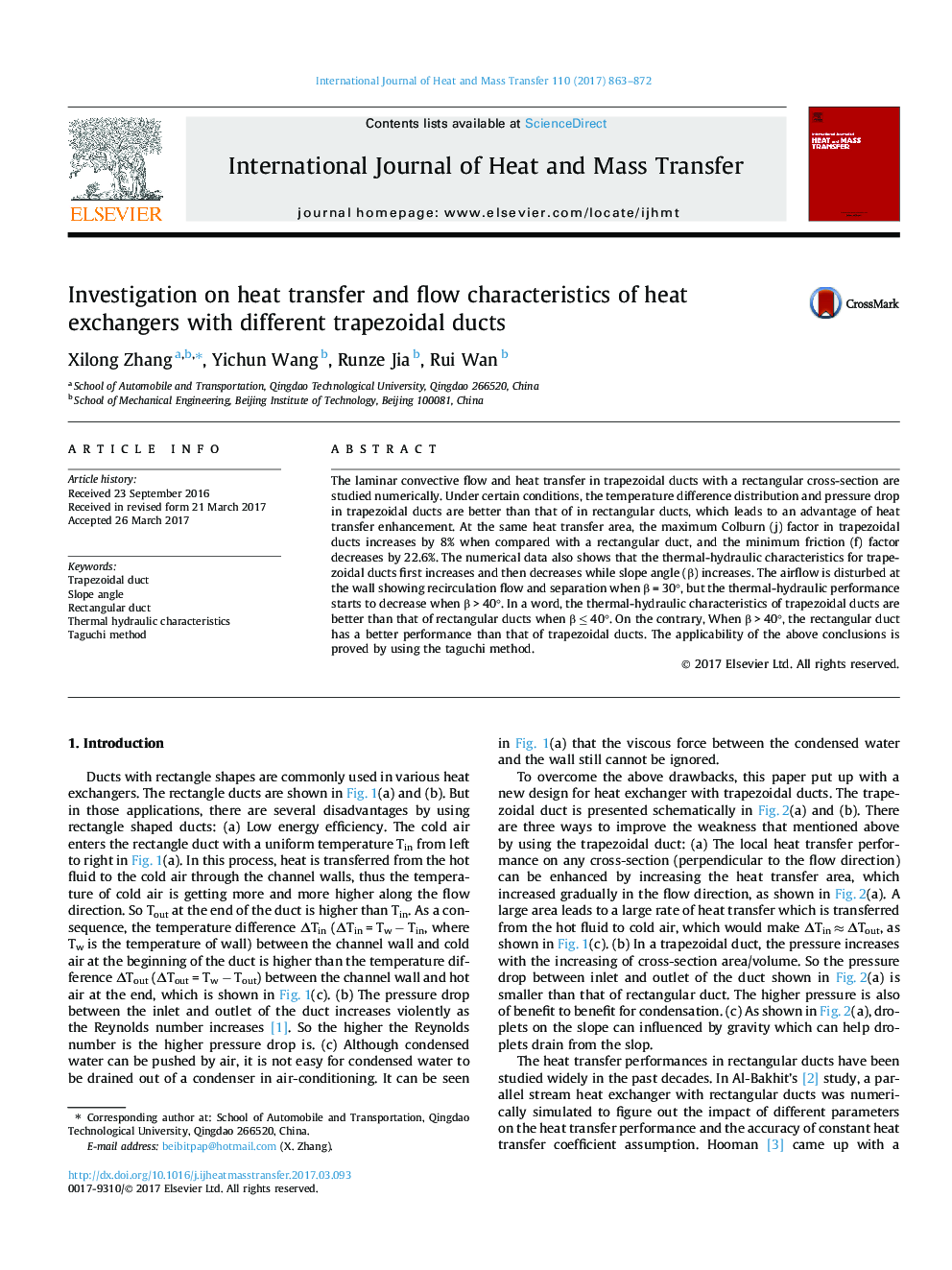| Article ID | Journal | Published Year | Pages | File Type |
|---|---|---|---|---|
| 4993614 | International Journal of Heat and Mass Transfer | 2017 | 10 Pages |
Abstract
The laminar convective flow and heat transfer in trapezoidal ducts with a rectangular cross-section are studied numerically. Under certain conditions, the temperature difference distribution and pressure drop in trapezoidal ducts are better than that of in rectangular ducts, which leads to an advantage of heat transfer enhancement. At the same heat transfer area, the maximum Colburn (j) factor in trapezoidal ducts increases by 8% when compared with a rectangular duct, and the minimum friction (f) factor decreases by 22.6%. The numerical data also shows that the thermal-hydraulic characteristics for trapezoidal ducts first increases and then decreases while slope angle (β) increases. The airflow is disturbed at the wall showing recirculation flow and separation when β = 30°, but the thermal-hydraulic performance starts to decrease when β > 40°. In a word, the thermal-hydraulic characteristics of trapezoidal ducts are better than that of rectangular ducts when β â¤Â 40°. On the contrary, When β > 40°, the rectangular duct has a better performance than that of trapezoidal ducts. The applicability of the above conclusions is proved by using the taguchi method.
Related Topics
Physical Sciences and Engineering
Chemical Engineering
Fluid Flow and Transfer Processes
Authors
Xilong Zhang, Yichun Wang, Runze Jia, Rui Wan,
